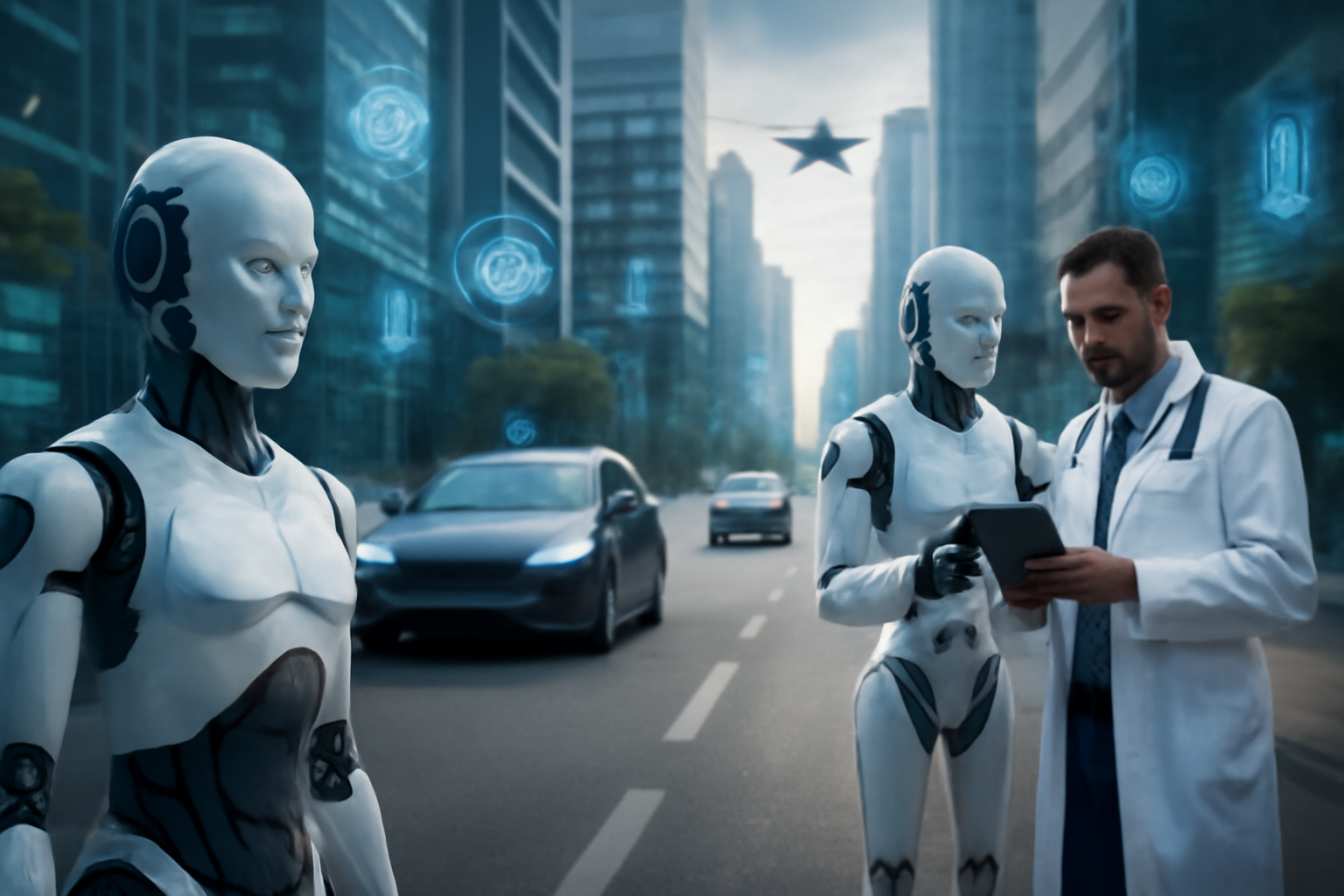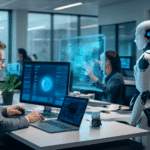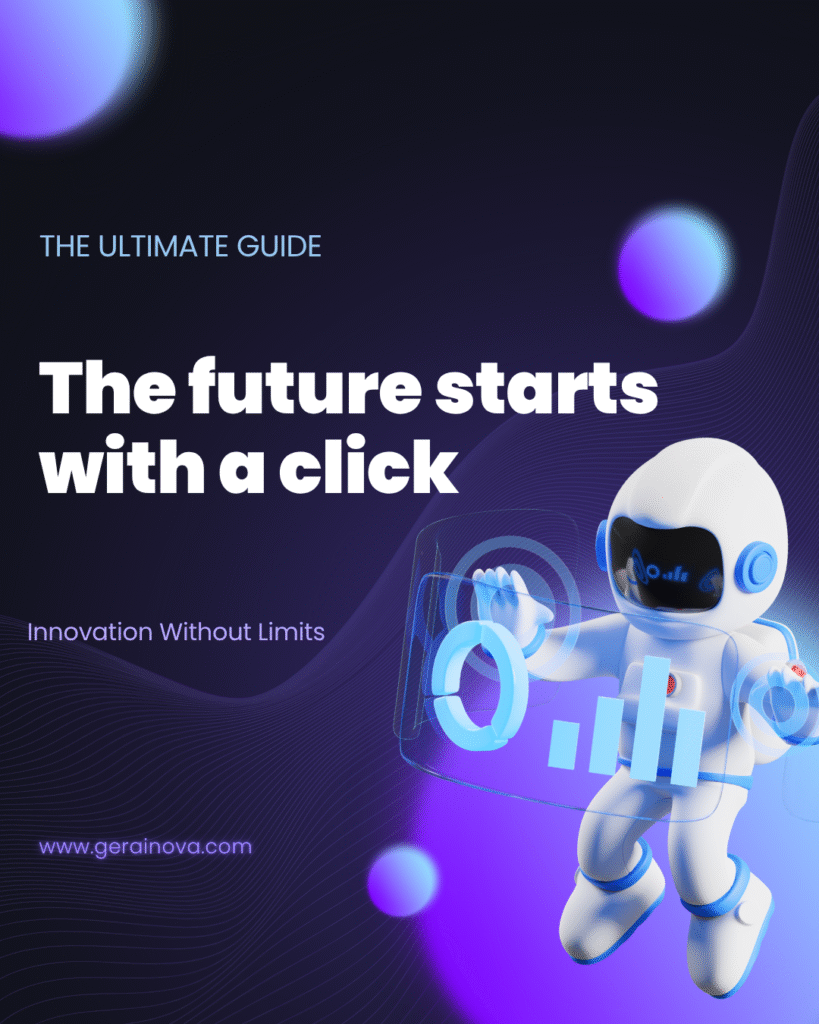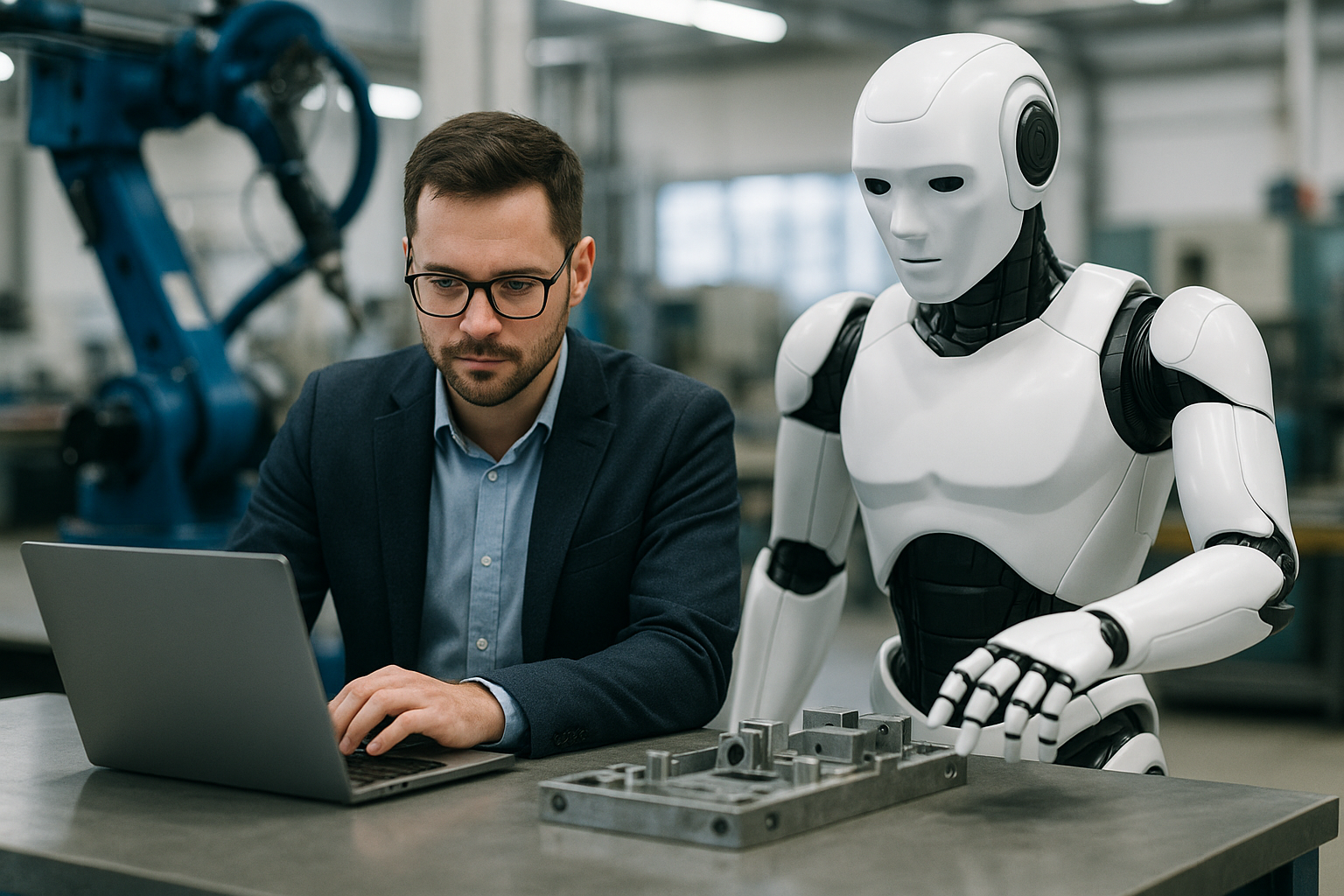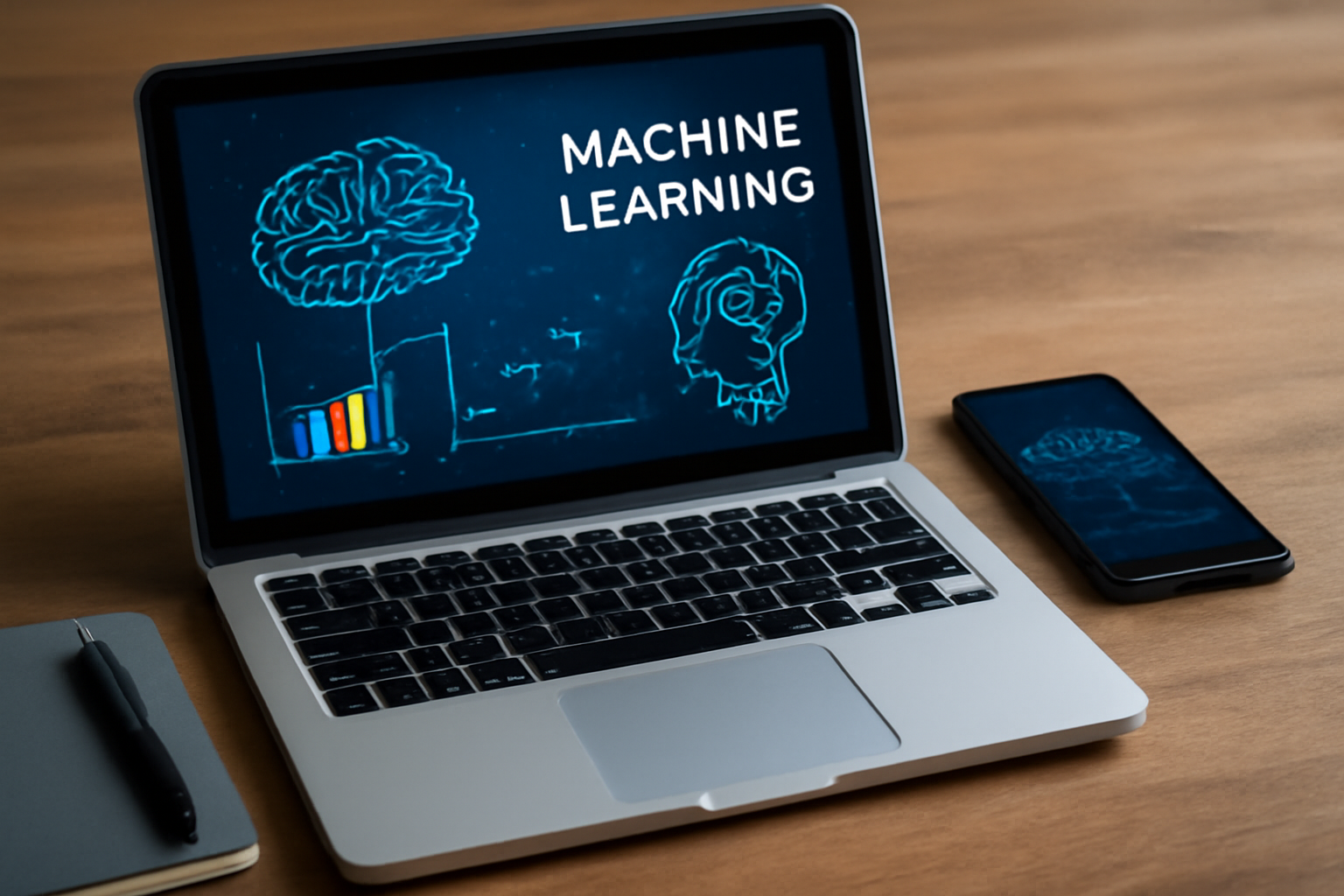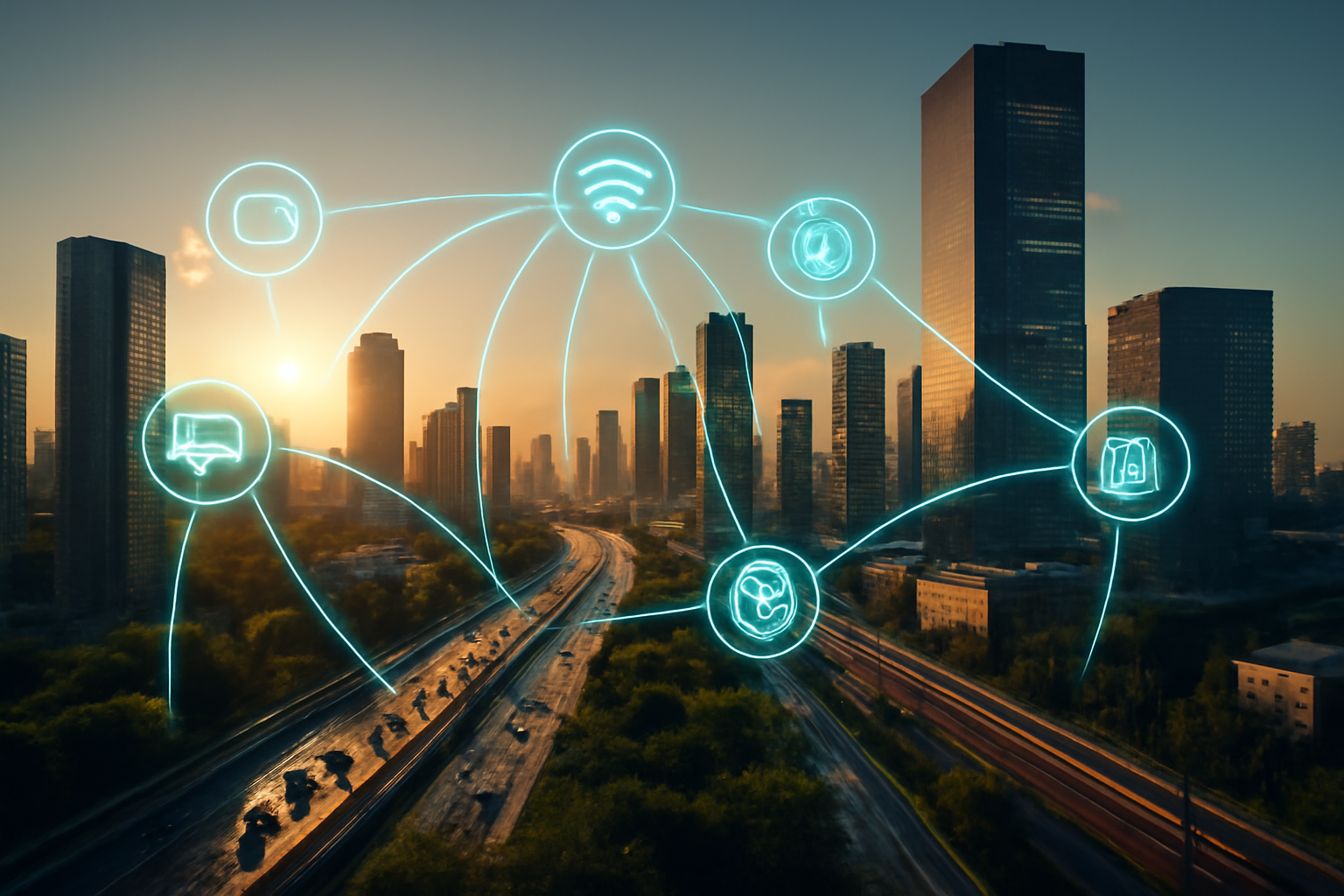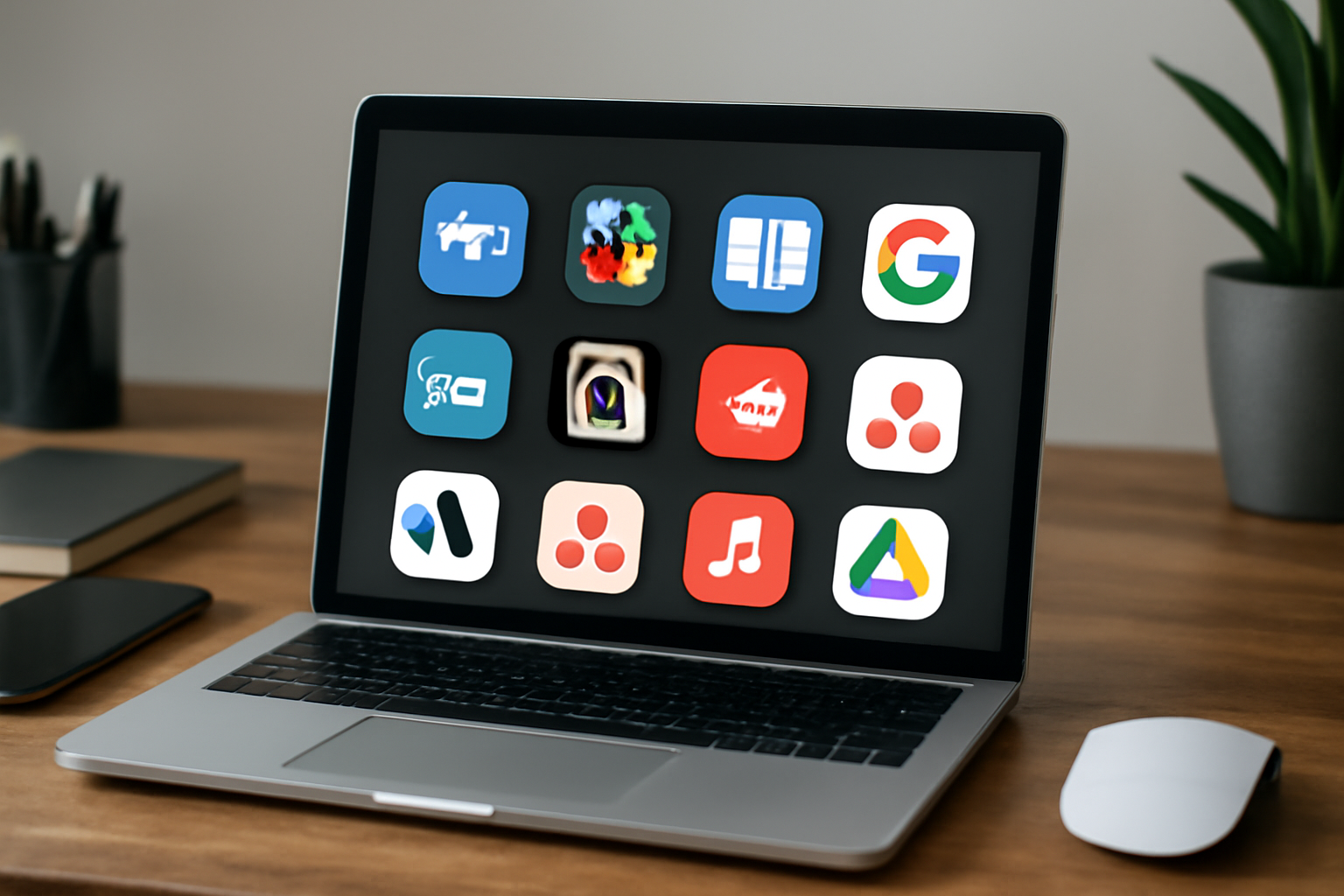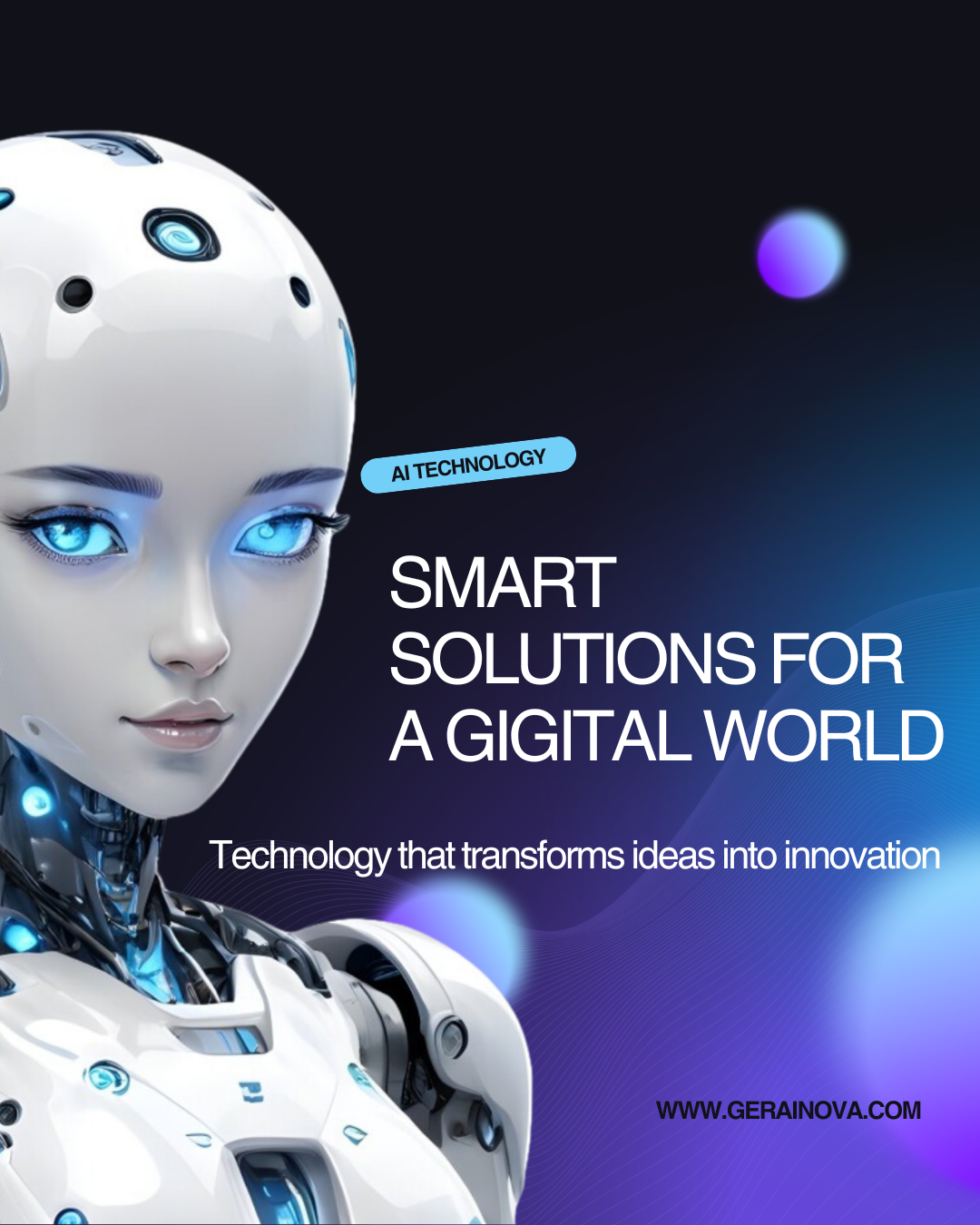Artificial Intelligence (AI) is no longer just a futuristic concept. It has already begun to permeate every aspect of modern life, from the way we interact with our devices to how businesses operate and even how industries function. In simple terms, AI refers to the simulation of human intelligence in machines that are programmed to think, learn, and problem-solve like humans. But how does AI actually work, and where is it being used? This article will explore the fundamentals of AI, its core technologies, and its applications in various industries.
What is Artificial Intelligence?
Artificial Intelligence is a branch of computer science focused on creating machines capable of performing tasks that typically require human intelligence. These tasks include problem-solving, decision-making, speech recognition, image processing, and natural language understanding.
AI can be classified into two broad categories: Narrow AI and General AI.
- Narrow AI refers to systems that are designed and trained for a specific task, such as facial recognition or playing chess. These systems excel in their particular areas but are limited in scope.
- General AI, on the other hand, is a theoretical form of AI that would have the ability to perform any intellectual task that a human can. While we have yet to achieve General AI, researchers are making strides toward creating more adaptable and autonomous systems.
How Does Artificial Intelligence Work?
AI works through the use of algorithms, which are sets of instructions or rules that allow machines to learn from data and make decisions. There are several core technologies behind AI that enable it to function:
1. Machine Learning (ML)
Machine Learning is a subset of AI that allows systems to learn from data without being explicitly programmed. Instead of following fixed instructions, ML algorithms use statistical methods to identify patterns in data and improve their performance over time.
There are three main types of Machine Learning:
- Supervised Learning: In this approach, the algorithm is trained on a labeled dataset, where the correct answer is provided. The model learns by comparing its predictions with the actual outcomes, and gradually improves.
- Unsupervised Learning: Here, the algorithm is given an unlabeled dataset and must find patterns or groupings in the data without prior knowledge of the correct outcomes. It’s useful for tasks like clustering or anomaly detection.
- Reinforcement Learning: This method teaches AI through a system of rewards and punishments. The algorithm learns by interacting with its environment and receiving feedback based on the actions it takes. This is commonly used in robotics and gaming.
2. Deep Learning
Deep Learning is a more advanced form of Machine Learning that uses artificial neural networks, which are designed to mimic the way the human brain processes information. These networks consist of multiple layers (hence the term “deep”) and are capable of recognizing complex patterns in large datasets.
Deep Learning is particularly effective in tasks such as image recognition, speech recognition, and natural language processing (NLP). For example, deep learning is behind the technology that powers self-driving cars to recognize objects on the road or the ability of voice assistants to understand and respond to spoken language.
3. Natural Language Processing (NLP)
Natural Language Processing is a field of AI that focuses on the interaction between computers and human language. It enables machines to understand, interpret, and generate human language in a way that is both meaningful and useful.
NLP is used in a variety of applications, from chatbots to translation services. It allows AI systems to comprehend the nuances of human communication, including slang, tone, and context. For instance, platforms like Google Translate and Siri use NLP to process and respond to queries in natural language.
Where is Artificial Intelligence Being Used?
AI is not just a buzzword—it is already transforming industries and improving the way we live and work. Let’s take a look at some of the most significant areas where AI is being applied.
1. Healthcare
AI is having a profound impact on healthcare by improving diagnosis, treatment, and patient care. One of the most promising applications of AI is in medical imaging. AI systems can analyze medical images, such as X-rays and MRIs, to identify potential issues like tumors or fractures. This can lead to faster diagnoses and more accurate results than traditional methods.
Moreover, AI is helping in personalized medicine, where it analyzes a patient’s genetic data, lifestyle, and medical history to recommend tailored treatments. For example, companies like Tempus are using AI to analyze cancer patients’ genetic data to provide customized treatment plans.
In the realm of drug discovery, AI is speeding up the process of finding new medications. Machine learning algorithms can analyze massive datasets to predict how different molecules will behave, reducing the time and cost associated with developing new drugs.
2. Autonomous Vehicles
Self-driving cars, also known as autonomous vehicles (AVs), use AI to navigate and make decisions without human intervention. These cars are equipped with an array of sensors, cameras, and machine learning algorithms that help them recognize objects, interpret road signs, and safely navigate through traffic.
Tesla, Waymo, and other companies are leading the way in developing autonomous vehicles. AI enables these vehicles to learn from vast amounts of data collected on the road, improving their driving capabilities over time. While fully autonomous cars are not yet commonplace, they are steadily being integrated into the automotive industry, with the potential to reduce traffic accidents, improve efficiency, and transform transportation.
3. Finance
AI is revolutionizing the financial industry in numerous ways, from fraud detection to personalized financial advice. Machine learning algorithms are used to identify unusual patterns in transactions, helping banks and credit card companies detect fraud and prevent financial crimes. These systems analyze customer behavior in real-time to flag suspicious activities, such as unauthorized purchases or identity theft.
In investment management, robo-advisors are becoming more popular. These AI-powered platforms analyze market trends and client preferences to offer personalized investment advice. For example, Betterment and Wealthfront use algorithms to help individuals manage their investments, making wealth management more accessible and affordable.
4. Retail and E-Commerce
AI is transforming the way we shop by enabling personalized shopping experiences. Online retailers like Amazon and Netflix use AI-powered recommendation systems to suggest products, movies, and shows based on your browsing and purchase history. These systems analyze user behavior and preferences to predict what products you’re most likely to buy, improving customer satisfaction and boosting sales.
AI is also being used in inventory management. Retailers can use AI to predict demand patterns, optimize stock levels, and reduce waste. This helps companies ensure they have the right products available at the right time, improving efficiency and profitability.
5. Customer Service
AI-powered chatbots and virtual assistants are revolutionizing customer service. These systems can handle a wide range of tasks, from answering frequently asked questions to processing transactions and resolving complaints. Companies like Zendesk and Intercom are implementing AI in their customer service platforms to improve efficiency and provide faster responses to customers.
AI-powered chatbots are able to learn from interactions and improve over time, becoming more effective in resolving customer issues. They are available 24/7, offering customers immediate support without the need to wait for a human agent.
6. Education
In the field of education, AI is being used to create personalized learning experiences for students. AI-driven platforms can analyze students’ learning styles, strengths, and weaknesses, tailoring lessons and assignments to suit individual needs. Adaptive learning technologies are helping educators provide customized support, allowing students to progress at their own pace.
AI is also used to assist teachers in grading assignments, tracking student progress, and providing feedback. Virtual tutors powered by AI can help students understand difficult concepts outside of classroom hours, further enhancing their learning experience.
7. Entertainment and Content Creation
AI is also having a huge impact on the entertainment industry. Streaming services like Spotify and Netflix use AI to recommend music, movies, and TV shows based on your viewing history. These systems analyze your preferences and provide personalized content suggestions, keeping you engaged and improving user experience.
In content creation, AI is being used to generate artificially created music, stories, and artwork. OpenAI’s GPT-3, for instance, can generate coherent and contextually relevant text based on prompts, and it is being used in everything from writing articles to creating poetry. DeepArt and similar services are also using AI to turn photos into works of art in various artistic styles.
Challenges and Ethical Considerations
While AI presents incredible opportunities, it also raises several ethical concerns and challenges. One of the major concerns is the potential bias in AI systems. Since AI algorithms are trained on data collected from the real world, they can unintentionally reflect biases present in that data, leading to unfair outcomes in fields like hiring, lending, and law enforcement.
Another issue is job displacement. As AI and automation become more prevalent, many jobs, particularly those involving routine tasks, may be at risk. However, AI is also creating new job opportunities, particularly in fields like data science, AI development, and robotics.
Finally, privacy is a significant concern as AI systems become more integrated into daily life. With AI systems collecting vast amounts of personal data, it’s crucial that privacy regulations are enforced to protect individuals’ rights.
Conclusion: The Future of Artificial Intelligence
Artificial Intelligence is one of the most transformative technologies of the modern era, with the potential to revolutionize industries, enhance daily life, and solve some of humanity’s greatest challenges. As AI continues to evolve, it will become an even more integral part of our world, providing new opportunities for growth and innovation.
However, with its rapid development, we must be mindful of the ethical implications, ensuring that AI is used responsibly and in ways that benefit society as a whole. The future of AI is bright, and as we continue to explore its capabilities, it is up to us to ensure that its impact is both positive and equitable.

